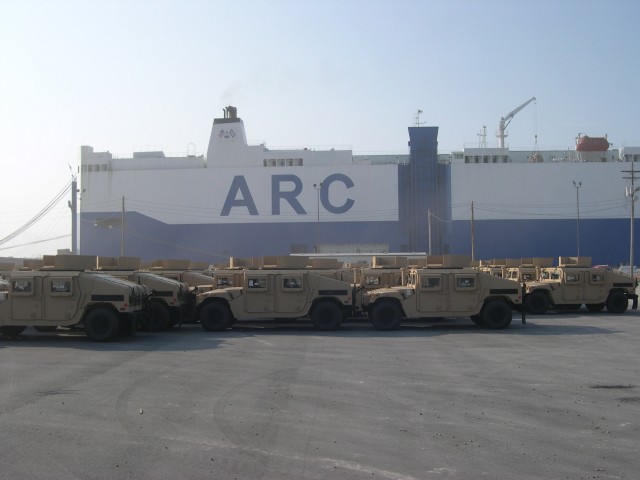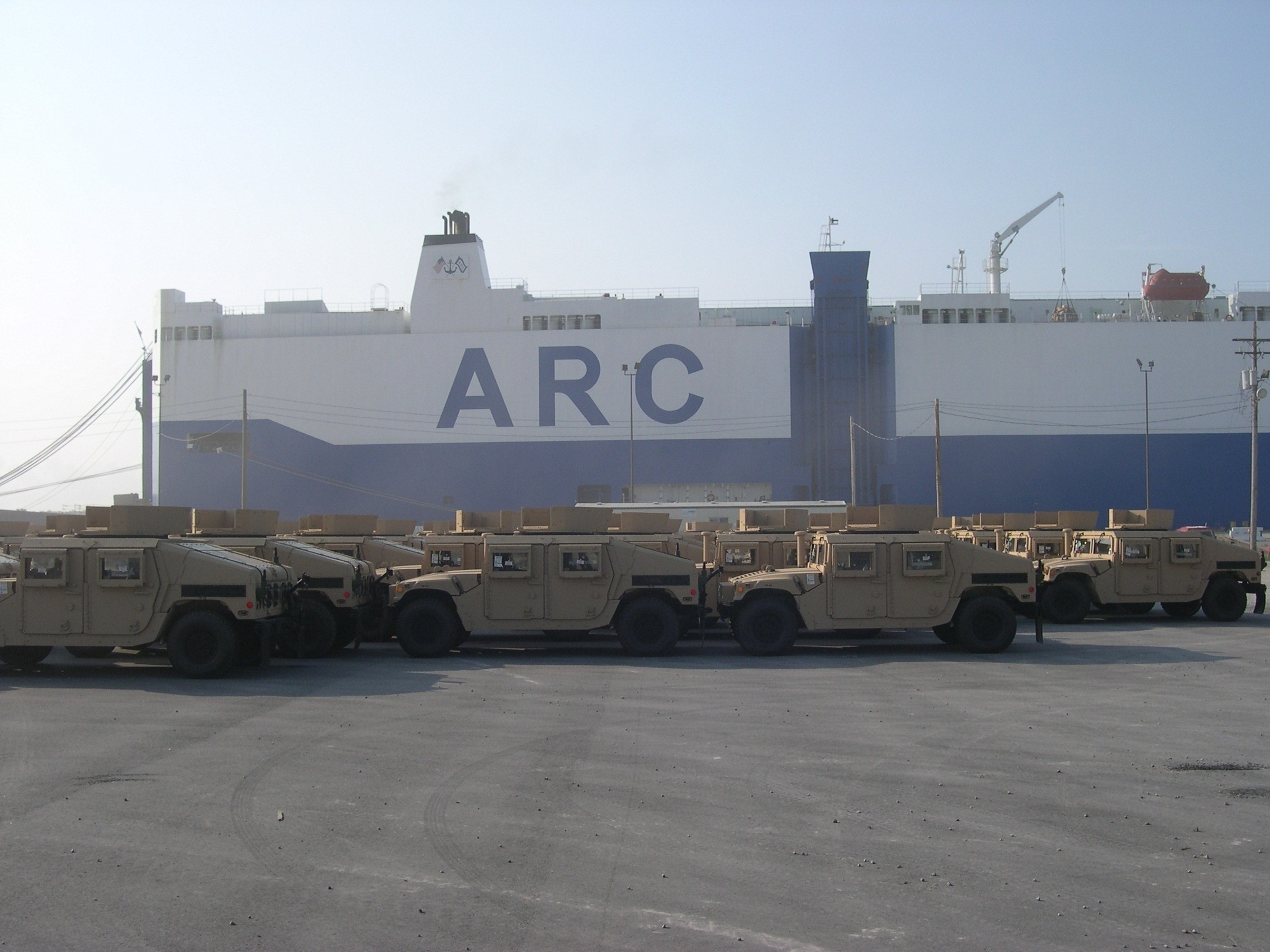Many of the life-saving Up-Armored HMMWVs being used in combat today are a direct result of combined DoD logistics efforts between the U.S. Army Product Manager Light Tactical Vehicles, Warren, Mich., and the Surface Deployment Distribution Command, Charleston, S.C.
The teamwork between SDDC and PM-LTV has led to the shipment of more than 5,000 UAHs to the Middle East according to the commercial shipper, American Roll-On Roll-Off Carrier.
These efforts were a factor in SDDC's 2007 Department of the Army Deployment Excellence Award.
PM-LTV begins the process by manufacturing UAHs in South Bend, Ind., according to tactical considerations and warfighter requirements. The mission of PM-LTV is to develop, acquire, produce, field and sustain safe, reliable, effective and supportable light tactical vehicles for the joint war-fighting community.
Once complete, PM-LTV notifies SDDC of the number of vehicles produced. SDDC then arranges the transportation via rail service to Charleston.
SDDC Charleston is responsible for the transportation of the UAHs to theater. Led by the 841st Transportation Battalion, SDDC Charleston is responsible for the East Coast strategic seaport mission of loading and discharging DoD cargo onto military and commercial vessels.
Once the UAHs are en route, SDDC tracks their movement through military shipping labels and radio frequency tags affixed to each unit.
The rail service ships the vehicles on multiple cars into the SDDC staging area at the Charleston Naval Weapons Station.
Before the ship is loaded, a PM-LTV quality assurance specialist performs a rigorous cargo inspection process.
"I've been doing this kind of work for a long time all over the world," said Crawford. "These UAHs are great because they are life-savers. The last couple years have brought some great new changes to these vehicles," said Bruce Crawford, a PM-LTV liaison officer and cargo inspector.
As SDDC stages the vehicles in the port area, they will notify upcoming commercial vessels of the incoming UAHs.
"Commercial vessels call Charleston on a liner schedule of approximately 10 days," said Guillermo Mosquera, SDDC Charleston civilian operations officer. "The up-armored HMMWVs have priority on the commercial vessels and are loaded first."
Mosquera said the UAHs rarely sit at the port more than one week.
Civilian longshoremen drive the vehicles onto the ARC ships and tie them down with lashing gear. SDDC oversees the loading process by creating a load plan, separating hazardous material, monitoring safety and security, and tracking the number of pieces loaded.
After the vessel is loaded, SDDC creates a vessel manifest and final stow plan to reflect where and what is the final load on the ARC vessel. The vessel captain accepts the manifest and begins the journey.
SDDC Charleston is in constant contact with their counterparts in the Middle East during the shipping process. Once the ship nears its destination, Central Command determines which units in Iraq or Kuwait receives the vehicles.
Editors note: Capt. Carlos Lago is the assistant product manager for light tactical vehicles at PM-LTV TACOM Life Cycle Management Command, Warren, Mich. Capt. Chris LeCron is a cargo movement officer and public affairs officer for SDDC East Coast, Charleston, S.C.


Social Sharing